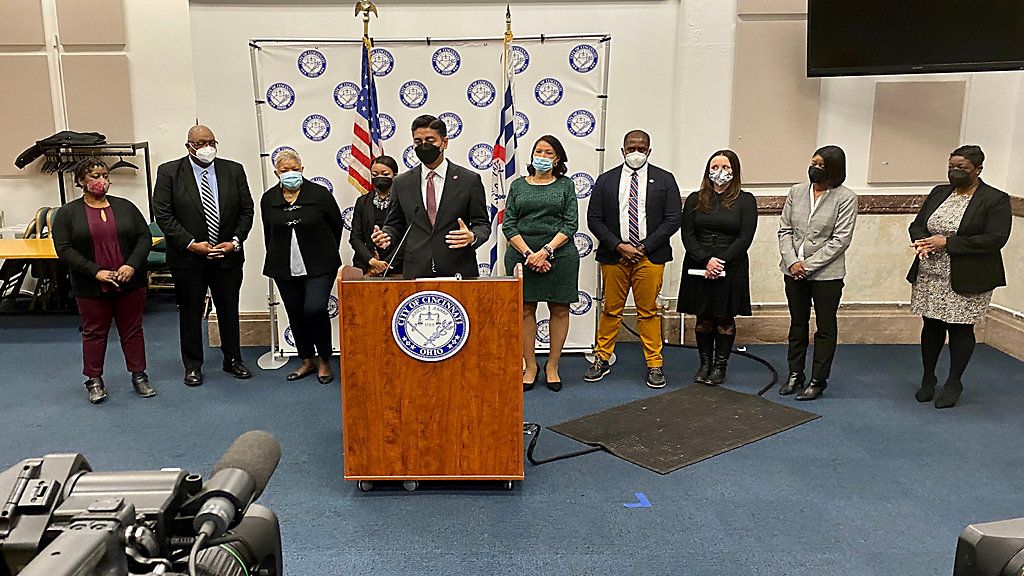CINCINNATI — A report released this month suggests that rental prices in Cincinnati are increasing at a rate unmatched by any major metropolitan area in the country.
What You Need To Know
- In June, Cincinnati had the largest jump in asked rental prices in the country
- The rise in rental costs suggests demand to live in Cincinnati is strong, but it also presents a challenge to those with lower incomes
- One reason for the price jump is inflation driving up the costs of labor and supplies for landlords
- Cities are looking for ways to create more housing stock to lessen demand and bring prices down a bit
That means several positive things for the Queen City, namely the housing market is strong and people want to call the area home. But it also presents challenges for some residents, especially those whose incomes may not be growing at the same speed as their rent payment.
The real estate brokerage Redfin announced earlier this month that despite a national tapering off of rent increases across the country, Cincinnati saw a 39% jump in asked-for rental prices year over year in June. The median asking price was $1,815.
It's important to note that number represents the median price landlords in Cincinnati were asking from new renters that month, not what all renters were paying.
It was the largest percentage jump among the 50 most populous U.S. metropolitan areas. Only Seattle, Nashville and Austin, Texas, had rent increases of at least 30%.
By comparison, rents in Columbus increased by 11.6% to $1,689 during that time period. Cleveland experienced a 9.2% increase to $1,486 per month.
“Rent growth is likely slowing because landlords are seeing demand start to ease as renters get pinched by inflation,” Redfin chief economist Daryl Fairweather said in the new report. “With the cost of gas, food and other products soaring, renters have less money to spend on housing.”
Reasons rents are rising
In May, the typical asking price for a rent exceeded $2,000 nationwide for the first time in the United States, per Redfin data.
Nationally, rent increases continue but at a much slower rate in June. The national median rent asking-price for the month went up 14% from a year earlier—the smallest such increase since October. The overall growth was up less than 1% from May.
But that’s not the case everywhere, Fairweather said. Places with strong job markets, like Seattle and New York, continue to see rent prices boom. Some cities became more popular during the pandemic, so rents in those places went up. Fairweather mentioned Austin and San Antonio, Texas, as examples.
“While it is true that rents are on the rise, the reasons are far more complex than the simple but inaccurate narrative that the owners and managers of multi-family properties are taking advantage of our current economic climate,” said Tonya Petersen, president of the board of directors for the Greater Cincinnati Northern Kentucky Apartment Association.

The nonprofit represents the owners and management companies of more than 100,000 apartment properties throughout the Greater Cincinnati and Northern Kentucky area.
GCNKAA has more than 275 members across the region — and most of them aren’t “large corporations that control thousands of units,” Petersen said. More than half of the industry is what she described as small, “mom-and-pop” owners.
“Less than a dime of every dollar paid in rent is an owners’ profit,” she said in a statement. And she feels those profits are “being squeezed further for them by rising costs of inflation” for things like materials and labor.
But it’s not all about the cost of concrete or salary wages. There’s a serious lack of housing supply, too. And it’s not just in Cincinnati.
Citing a statistic from the National Apartment Association, Petersen said the industry needs to build 328,000 new apartments across the country each year just to keep up with current demand. That has only happened four times since 1989.
Despite a recent boom in local development, the region has also struggled to keep speed with demand. There are at least 7,500 apartments planned in the Cincinnati region over the next three years, Petersen said. Even with those numbers, she feels supply will still be short.
A lot of the recent development has focused on upscale and luxury apartments, Petersen said. And it’s not just in places like downtown Cincinnati and its popular Over-the-Rhine neighborhood. It’s areas all over the region, from Anderson Township to Eastgate to Cincinnati’s College Hill neighborhood. Many of the river cities in Northern Kentucky as well.
Cam Hardy moved to downtown from the city’s Northside neighborhood about two years ago. Rent for his Court Street apartment is “less than what some are paying” and under the average asking price Redfin cited. He’s not living in a luxury apartment, but he made a point of saying his landlord, Patrick Daffin, has done a “really good care of the property.”
Just as important, Hardy said, is the fact that the apartment management team has tried to keep rent as low as possible for new tenants and those who’ve been living there.
Daffin owns 36 apartment units spread across Cincinnati’s downtown neighborhood. Overall, he’s raised rent prices less than 10% in the past six years. He’s only been able to do that, he said, because he purchased most of his 36 properties several years ago when there were better interest rates and appliances and general supplies cost less.
He doesn’t plan to purchase any new properties or undertake any major renovations while “everything’s so much more expensive.”
Rising rental costs and a push to pull them back down
Seeing rental prices continue to rise month after month is a major fear for Kevin Finn, president and CEO of Strategies to End Homelessness. He called a lack of affordable housing — usually defined as housing that costs 30% or less of a household’s total income — as the No. 1 cause of homelessness.
“When rental costs increase, more people are at risk of becoming homeless," he said. “It’s not a coincidence that cities that have seen the biggest increases in homelessness in recent years have also seen the largest increases in housing costs, cities like San Francisco, Los Angeles and Washington, D.C.”
Brandon Rudd, with the Cincinnati USA Regional Chamber, called it “no surprise” to him, or anyone working in the housing policy sphere, that Cincinnati’s rental prices have increased so rapidly. The data also shows why housing policy agendas like the Cincinnati Chamber’s are important.
Rudd, who heads the chamber’s Center for Research and Data, said there’s no one-off or easy solution. It’s going to take an “all of the above” housing strategy to increase the supply of affordable housing in the region.
That strategy will include capitalizing on federal and state funding to support rent support programs, city-level eviction prevention programs and using Cincinnati’s rapidly growing Affordable Trust Fund to construct more affordable housing.
This spring, the city of Cincinnati announced a plan to help low- and moderate-income residents avoid the cost of high-price rents by providing them with direct financial aid to help them purchase their first home.
“Research shows that this is the way to go,” Rudd said. “Our relative affordability compared to peer regions is a strength we want to maintain, so we must work together as a region to increase our housing supply by removing barriers to new construction.”

Fairweather told Redfin more cities should follow the lead of Minneapolis, Minn., which was one of only three metro areas that saw a fall in rent prices in June compared to last year.
Minneapolis had a 7% decline, while Milwaukee had a 12% dip. The decrease in Kansas City was less than 1%. The same three metro areas saw rents decline in April and May as well.
Part of the success in Minneapolis, Fairweather said, had to do with the city’s elimination of single-family zoning in 2018. Last year, Minneapolis got rid of a rule that required residential developers to include parking spaces.
“Now builders can replace parking spots with more housing units, which increases supply and therefore releases some upward pressure on rents,” he added.
In June, Mayor Aftab Pureval told an audience at a local Housing Solutions Summit the importance of evaluating the use of widespread single-family zoning across Cincinnati, especially in light of new zoning regulations in 2004 that limited housing supply options in those areas. Right now, more than half of residential areas in Cincinnati are zoned only for single-family homes.
He also stressed that mandatory parking minimums will not only drive up housing prices but make communities less walkable, as well.
Evaluating the city’s zoning needs to be a key part of any proposed solution to increasing the supply and diversity of its housing stock, according to Kristen Baker, executive director of LISC Greater Cincinnati, a local community development financial institution.
Baker is a proponent of updating the zoning code to encourage more housing along commercial corridors and business districts. That will add more housing close to “services and amenities that people use every day,” Baker said.
Doing so will provide more housing options for those with “modest incomes,” such as the growing senior population and single-person households.
It could also present a general development opportunity for communities that don’t have large-scale space needed for transformative new construction, she added.



